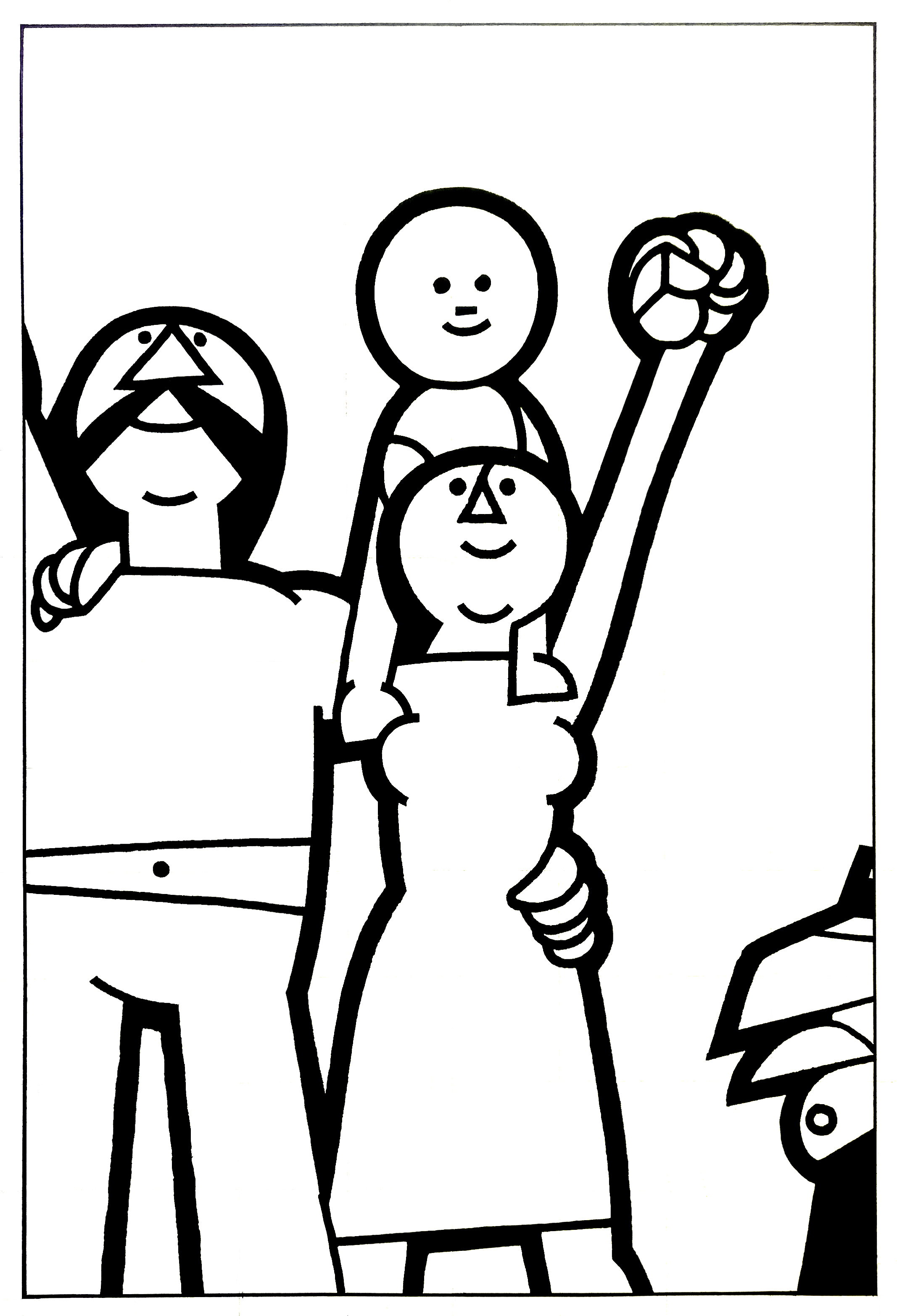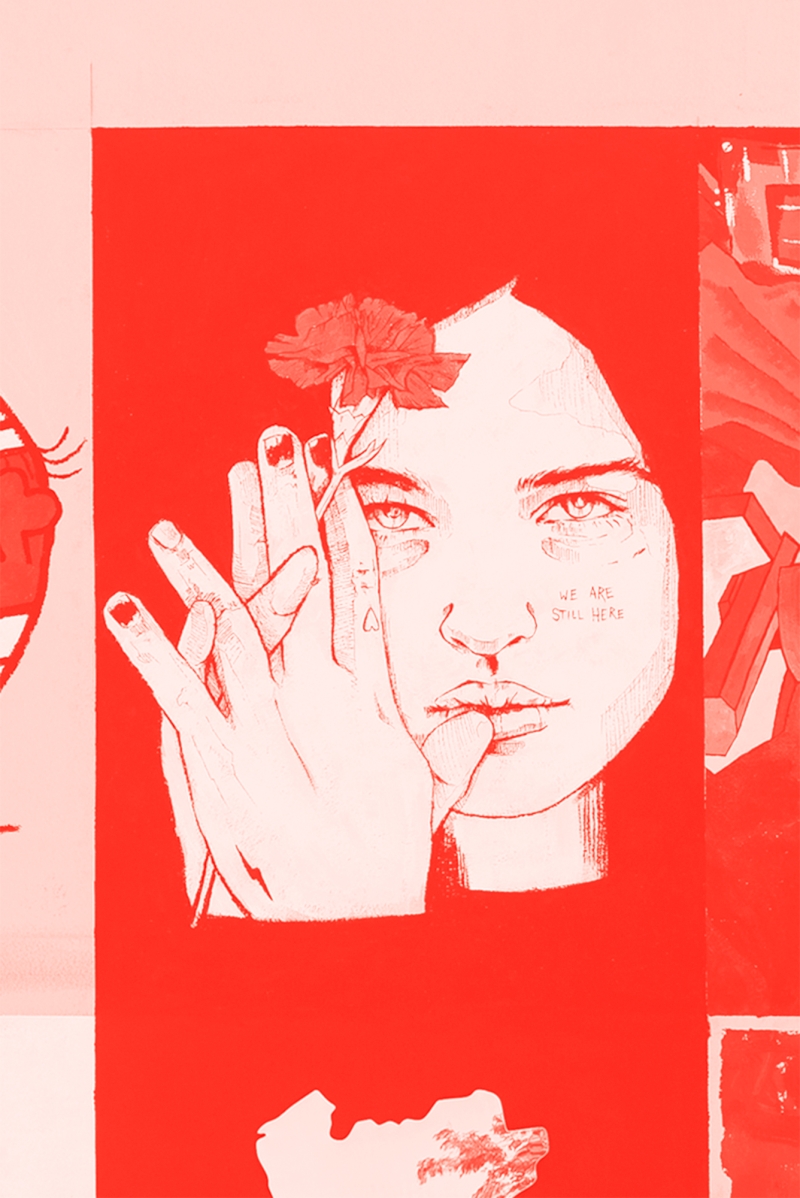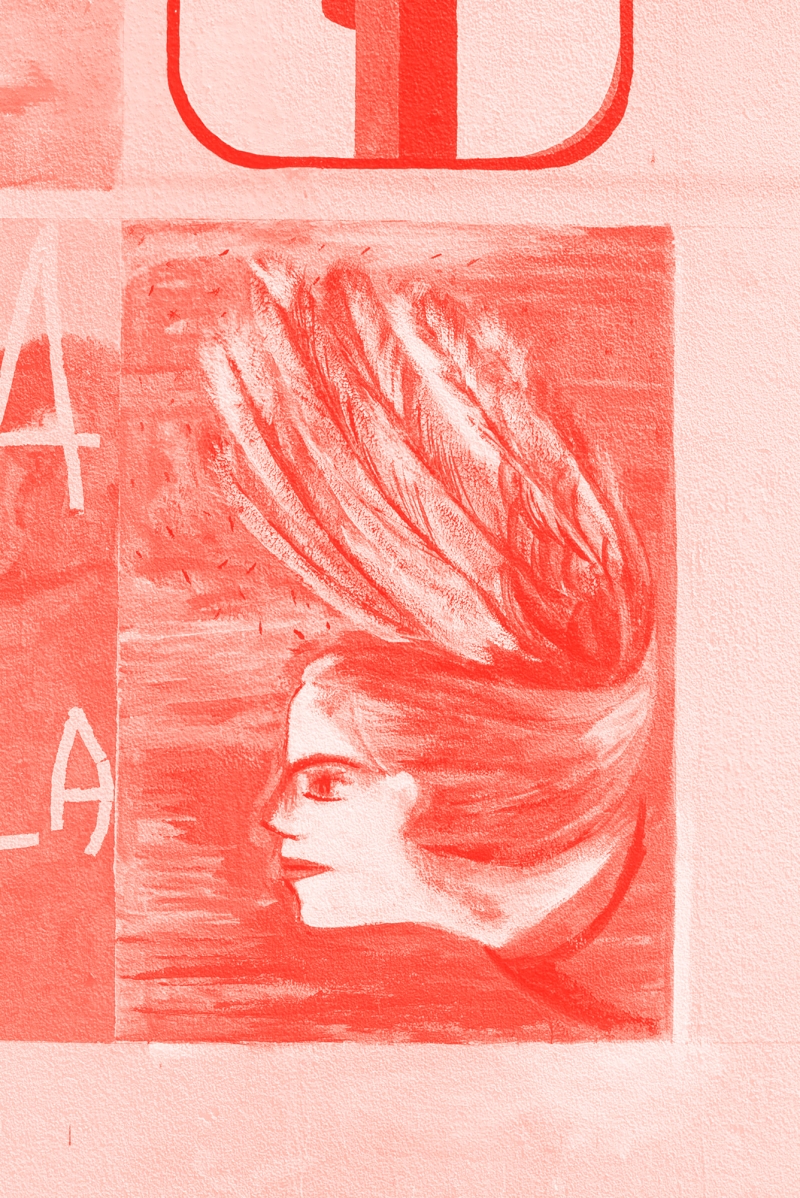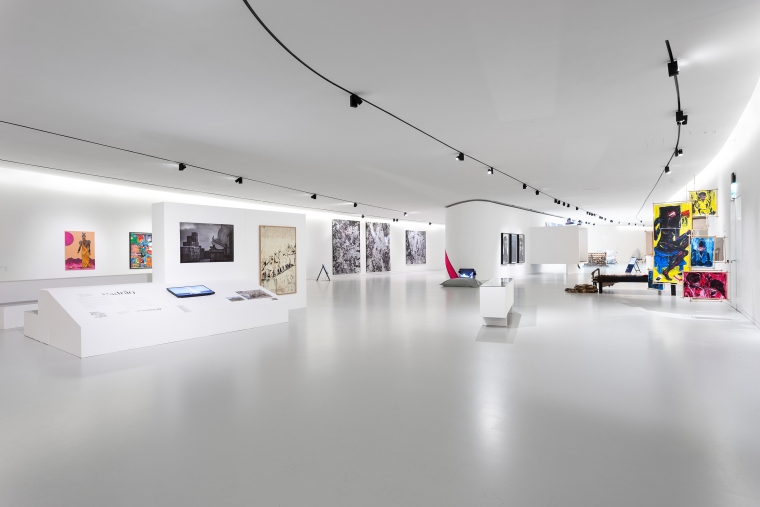MANUEL BOTELHO
48 artists, 48 years of freedom
Manuel Botelho (Lisbon, 1950) interviewed by Filipa Lowndes Vicente at maat on 10 June 2022, on the day the 48 artists, 48 years of freedom mural was painted
Participation on the maat mural in 2022
For my contribution to this mural, I decided to do something very specific: a tribute to João Abel Manta. He was actually invited to participate, but he wasn’t able to; he’s 96 and very fragile.
João Abel Manta is a seminal, historic figure. He’s created images that we’ll never forget – from before and after the revolution on the 25 April. He was already doing them in the late 1960s and continued after the 25 April, diversifying the content of the images and the graphic lexicon even further. And I couldn’t help but present an homage to him. Moreover, we have family ties – not that that really matters in this case, as he deserves to be paid homage to whatever the circumstance – but I can’t forget that he was my father-in-law. My daughters Joana and Ana are his granddaughters. I was married to Isabel Manta, his daughter, and at the time of the original 1974 panel, my eldest daughter wasn’t born yet; the pregnancy was well advanced and Joana was born on the 22 September.
It’s really interesting, because the image I chose is also very symbolic for me. In addition to all of the collective resonance from this time of hope and optimism, there’s a very important personal dimension here. It’s not me in this drawing, but it could be. I’ve never had a moustache like that, but it’s my generation. I’m the same age. I had children at that time and saw them being born!
The 10 June 1974 at Galeria de Belém
On the 10 June 1974, I went to see what was happening at the Galeria de Arte Moderna in Belém. I knew João Abel Manta and Rolando Sá Nogueira were taking part. Predictably, I found them side by side. They were close friends. To get an idea, all I’ll say is that Rolando used to have dinner at João Abel’s house every Saturday for decades, and I was there several times. He didn’t drive, and on many occasions, I was the one who took him home after dinner. Furthermore, he was my teacher at the Sociedade Nacional de Belas-Artes (the Portuguese Fine Arts Society). And we became friends. Sá Nogueira was an extremely important person in my life.
From the 10 June, I remember the amazing festive mood, with all those people painting and talking on the scaffolding and others watching from down here. I took a few photos, not many. At the time, we were all filled with this great burning passion and that initiative was powerfully symbolic. It was a celebration almost as the event was happening… because it was still less than two months since we’d achieved freedom. And we were on fire. You can’t imagine how much. At the time, I was studying at ESBAL [Escola Superior de Bela-Artes de Lisboa, the Lisbon College of Fine Arts], where classes had stopped because of the continual mayhem and the successive students’ meetings. I also worked at Tainha’s studio [Manuel Tainha, 1922–2012], where basically all we did was discuss what was going on. It was overwhelming. We were living through something that we’d dreamt of our entire lives. The euphoria was indescribable.
The 25 April 1974
The horror of living in a deprived country under the oppressive yoke of a dictatorship is something that young people can’t conceive of today, I’m happy to say. But for me… for all of us, whether younger or older, the 25 April will always be an important milestone. In the essential things, the big objectives were achieved. The National Health Service was set up, a proper educational system was implemented across the country, money was put into housing and welfare… and we’re free to fight for what still needs to be done. What more could we want?
As we’re talking about that time, I have to mention our naive idea of a perfect world of absolute equality. Aspiring to impossible things like that is part of being young; and some were bound to be disappointed with what didn’t get done. Furthermore, in the months that followed April, and afterwards in 1975, there were those political fumbles that were a normal part of a revolutionary process, which is always complicated. And the country fragmented. But we were all united at the beginning. A sea of people who opposed the Salazar and Caetano regime walked up Avenida Almirante Reis on the 1 May 1974. There aren’t words to express what we felt at that moment.
The image by João Abel that I chose for this panel catches a bit of that, that snapshot of a moment when we spoke with one voice. Things didn’t exactly continue that way, but I don’t feel let down in any way. Not at all. I sometimes hear people saying the strangest things that don’t make any sense to me, ignoring the incredible differences between what our country was until the 24 April ‘74 and what it is now. This woman with a child on her shoulders is an image of optimism and belief in the future. She has her hand in the air and her fist is clenched. Nowadays, that’s normal, but at the time you couldn’t do it. You couldn’t walk in the street and demonstrate like that; you’d be arrested and beaten up. It was no joke. You couldn’t write in the newspapers, you didn’t have the right to information, you didn’t have the right to anything. Portugal was an under-developed country. There was catastrophic poverty and illiteracy. Our soldiers were dying in Africa in an unjustifiable war; it was a horrific thing that you couldn’t talk about. Today, we can talk without fear of being arrested by the PIDE [secret police]. We can write and paint images on the walls of maat, freely. We can write in the newspapers and say what we think on TV. We can fight for what we believe in… And we can see the whole world on the Internet. Before, you couldn’t describe how miserable this place was; it was like we were living in the Middle Ages. We left the Middle Ages on the 25 April 1974.
|
For the panel 48 artists, 48 years of freedom, I selected a fragment from João Abel Manta’s cartoon “1.º de Maio de 1974” [1 May 1974]. It was a magical and unrepeatable day of unity and celebration.
|
48 artists, 48 years of freedom is the name of the artwork that will be symbolically created on 10 June 2022 in the maat Gardens, a collective mural intervention that reinterprets the work entitled Painel do Mercado do Povo [The People's Market Panel] created by the Movimento Democrático dos Artistas Plásticos [Plastic Artists for Democracy Movement] on 10 June 1974, in Belém. The reinterpretation of this mural, 24 meters long and 3 meters wide, has the participation of 48 artists: some of them participated in the creation of the original panel and the others are artists who stood out in the Portuguese art scene during the last 48 years of democracy in Portugal, an anniversary celebrated this year, and some of them are part of the exhibition Interferences: Emerging Urban Cultures (maat, 30/03–05/09/2022).
|
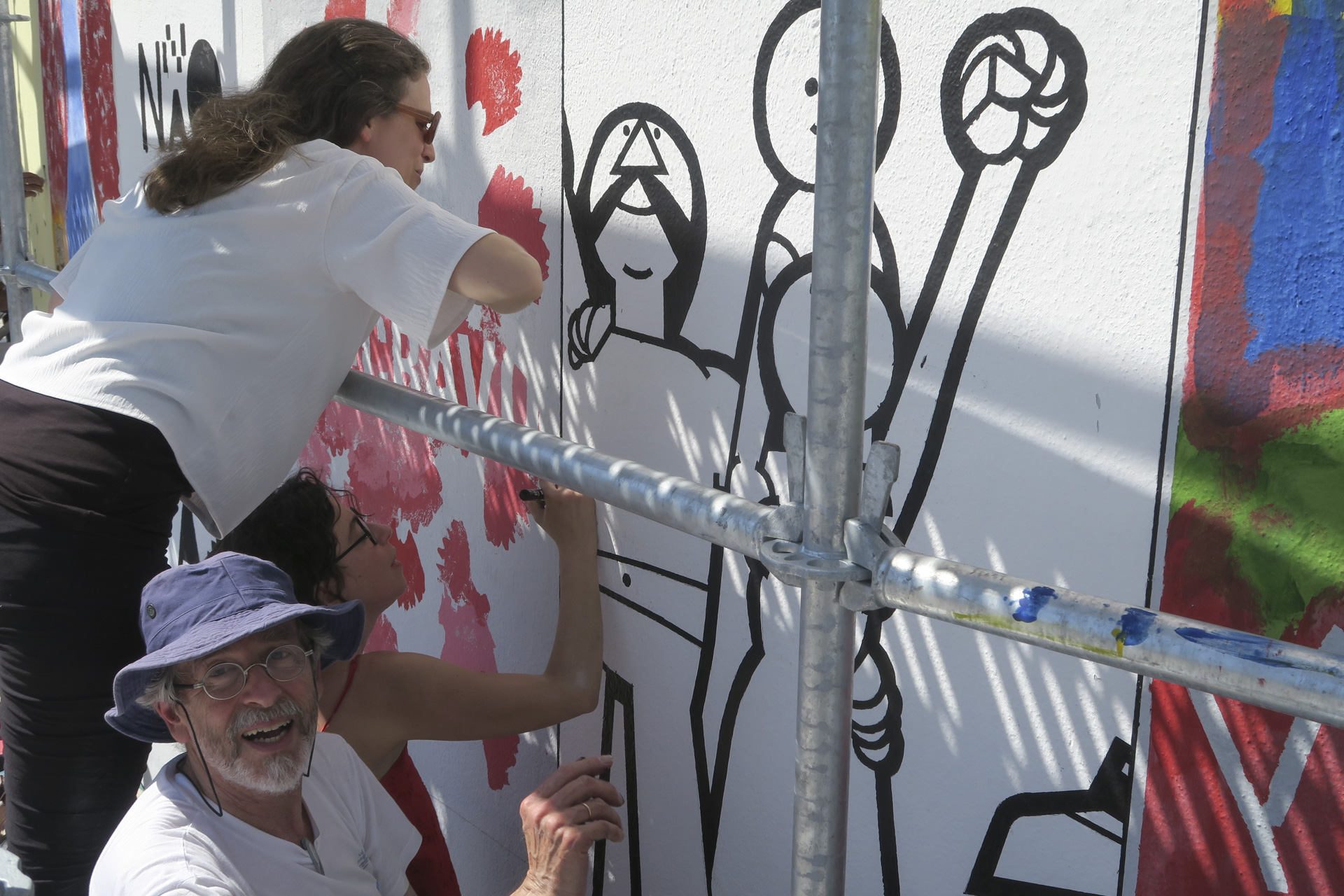
Ana Manta Botelho and Manuel Botelho working on the panel 48 artists, 48 years of freedom, maat, Lisbon, 10 June 2022.
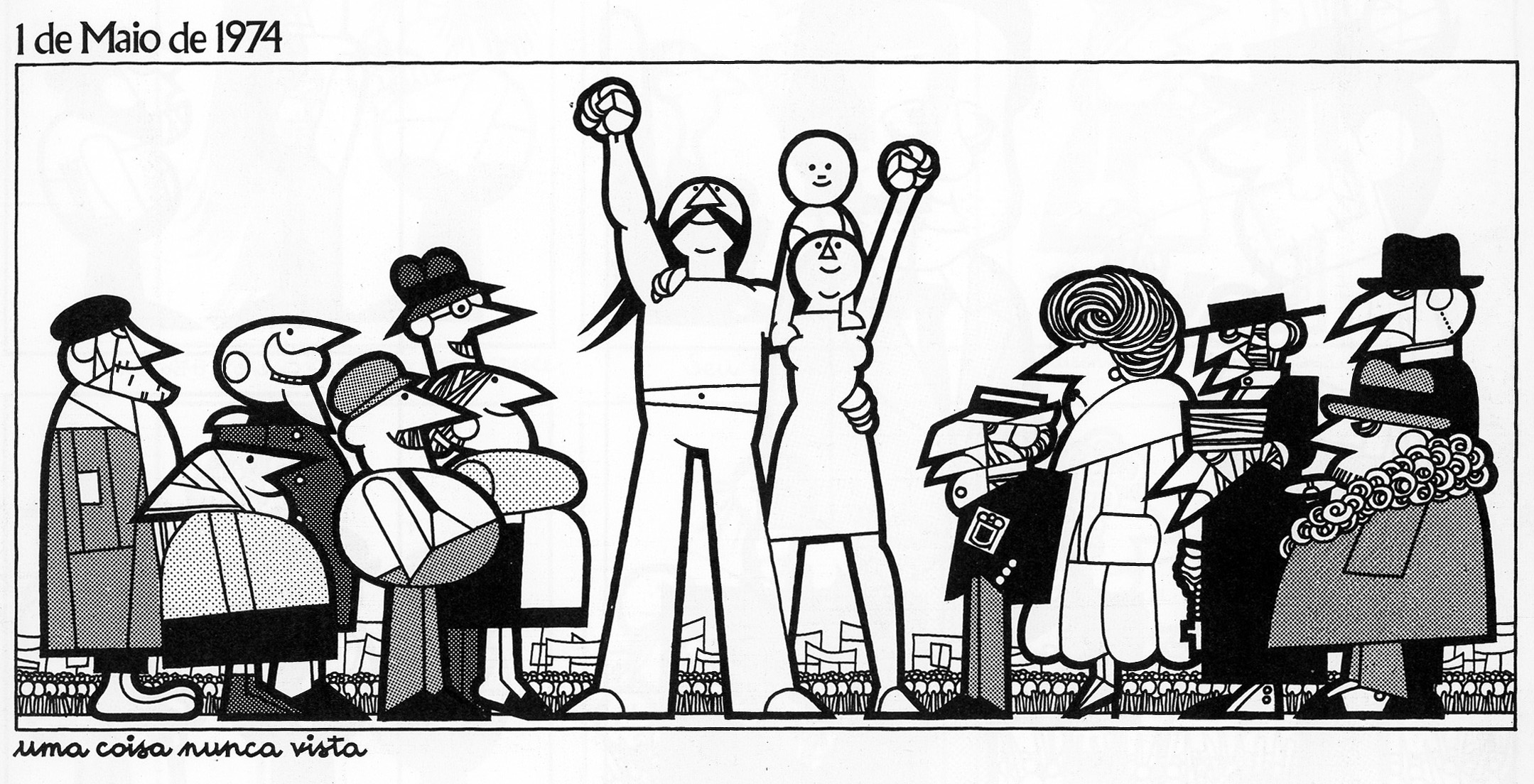
João Abel Manta, 1 de Maio de 1974, "something never seen before", 1974.

Joana Manta Botelho and Manuel Botelho, 1976.
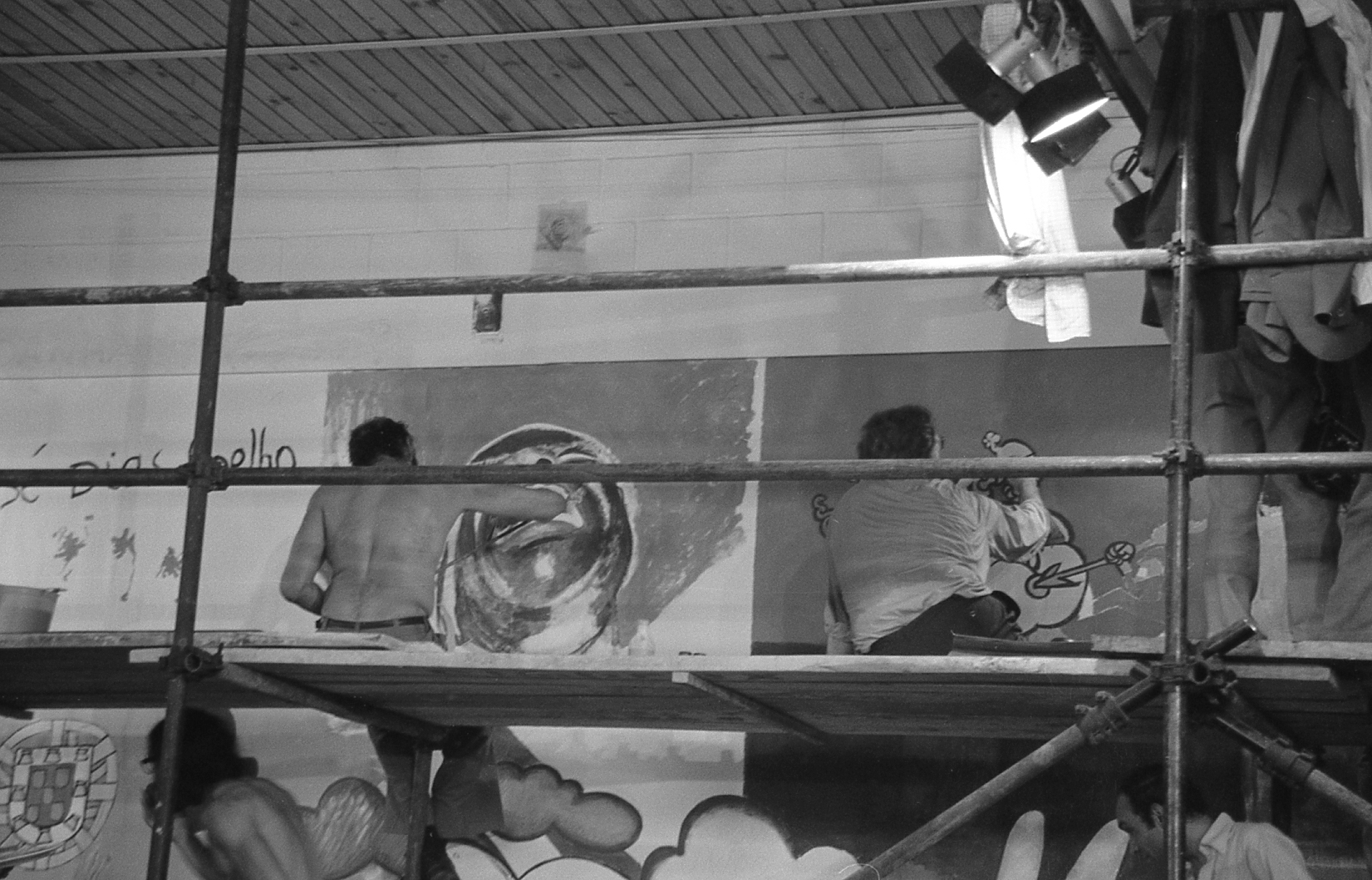
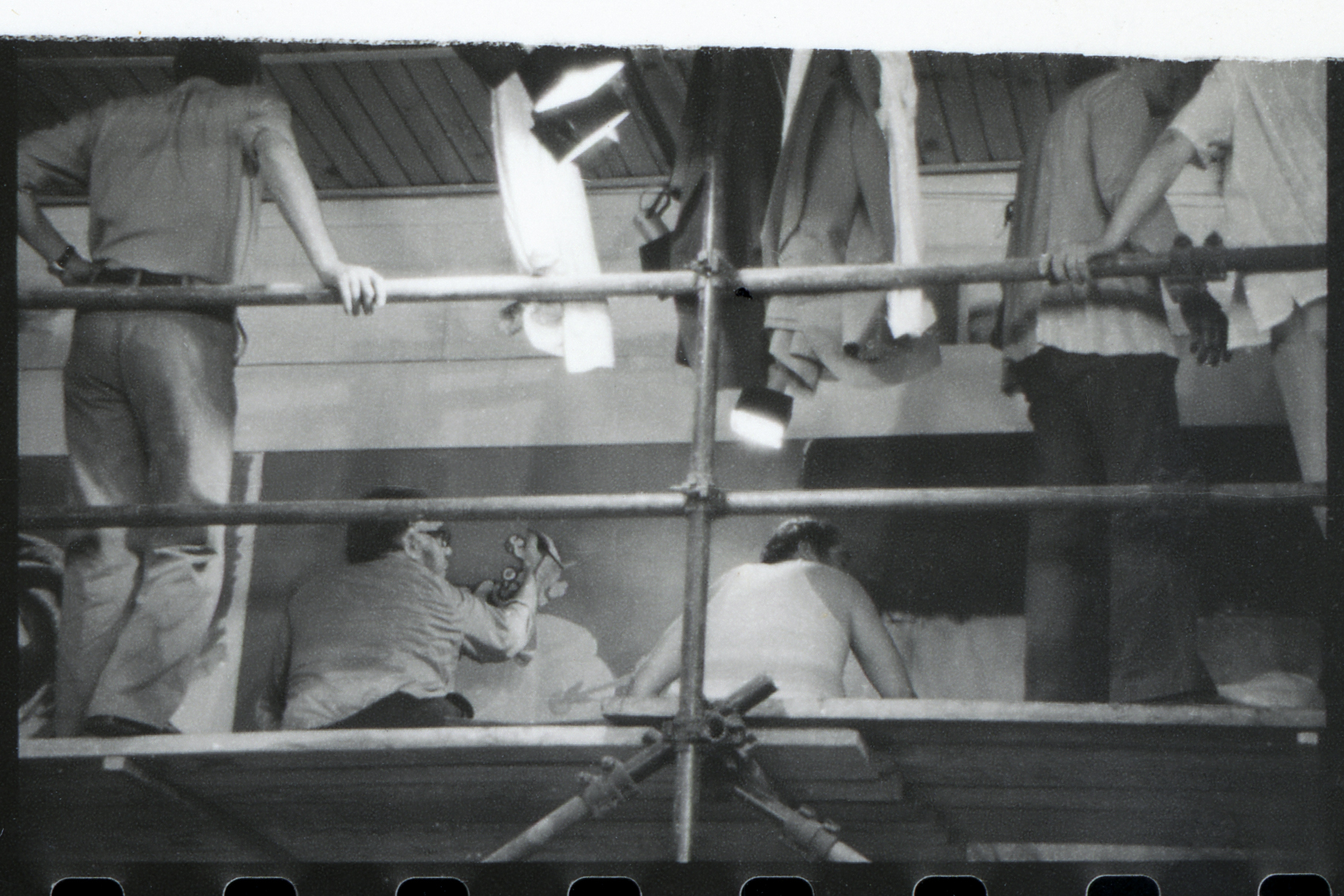
Rolando Sá Nogueira and João Abel Manta working on the Painel do Mercado do Povo [The People's Market Panel], Lisbon, 1974.
|
|
Manuel Botelho, project for the panel 48 artists, 48 years of freedom, June 2022. Quote from the cartoon by João Abel Manta, 1 de maio de 1974, 1974.
All images courtesy of Manuel Botelho. |


